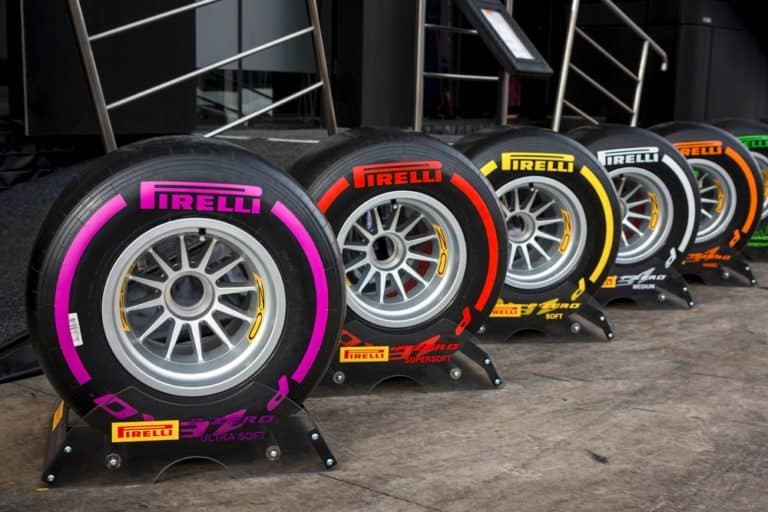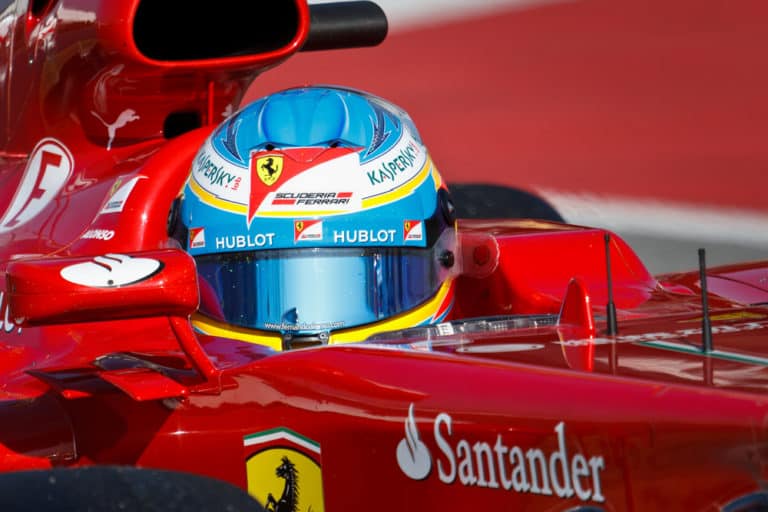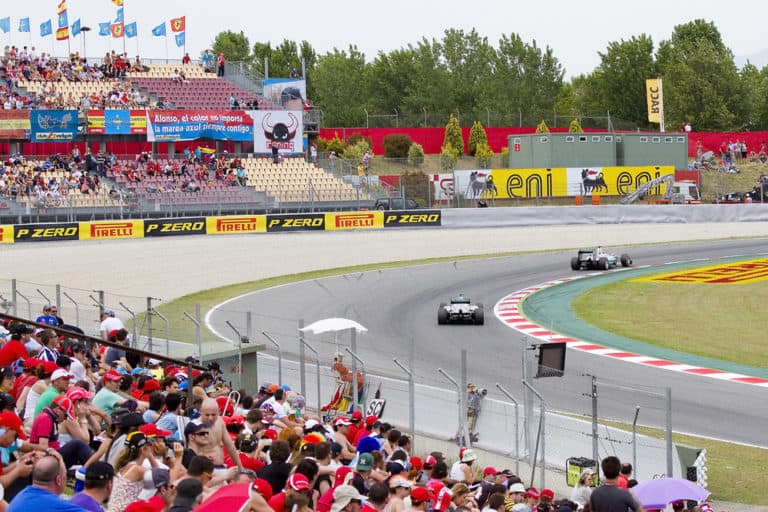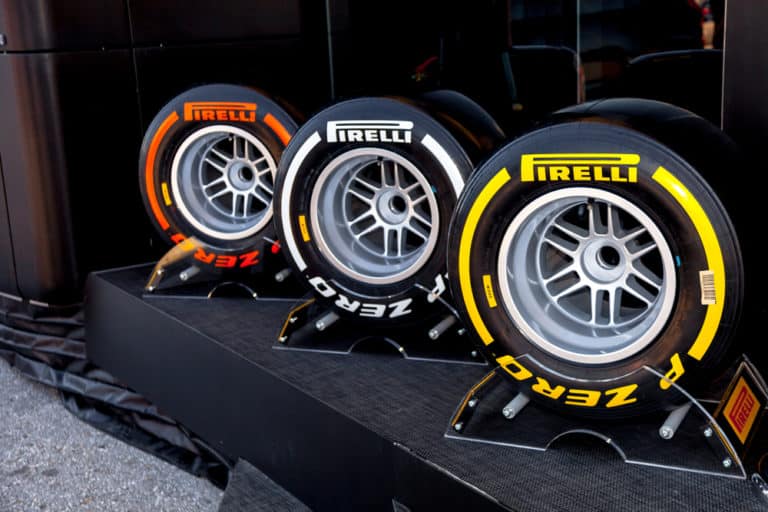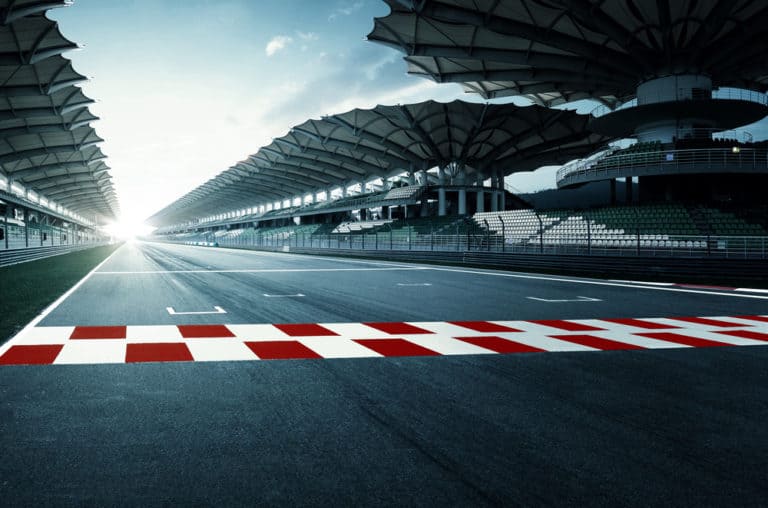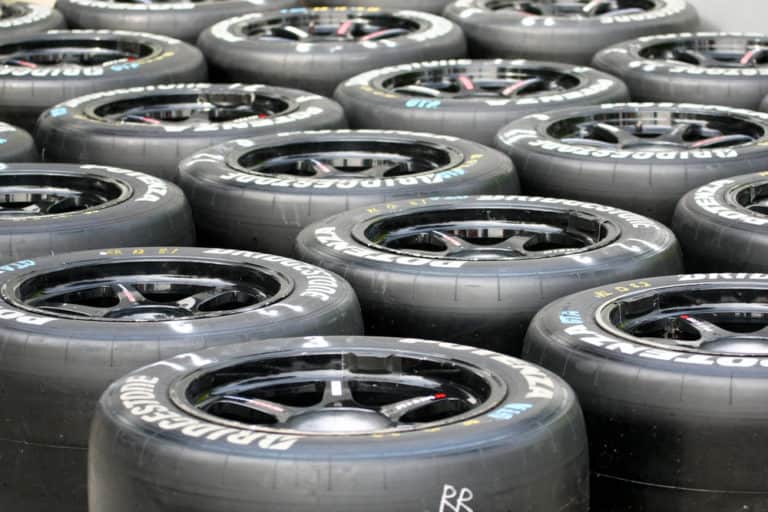Image editorial credit: Jens Mommens / Shutterstock.com
Most cars have a reverse gear; it is incorporated in car designs to assist humans to successfully navigate traffic and getting from point A to B. Formula 1 cars also have the ability to reverse. The Formula 1 teams just hardly ever use this gear. It is as though the drivers don’t even know that the gear is there, as they are so focused on speeding forward around the track.
A Formula 1 racing car can reverse. All Formula 1 cars have a reverse gear to comply with regulations implemented in 2014. According to these stipulations, all Formula 1 cars should have 8 forward gears and 1 reverse gear; however, it’s hardly used by drivers.
So now that we know that a Formula 1 car can indeed reverse, why do we rarely see drivers reverse during a race and, more importantly, during a pitstop? For us spectators, it seems that the reverse gear is just a requirement and not a useful function used regularly. Let’s explore if this is the case and get behind the spin of the wheel.
Why Don’t We See Formula 1 Cars Reverse?
There are many reasons for not seeing Formula 1 cars reverse, from it being impractical, regulations prohibiting it, drivers not knowing how to use it, and so forth. Let us examine the main reasons for this lack of reversing in Formula 1.
- The steering wheel is designed to control all the gears via paddle shifters. It is designed so that the driver cannot accidentally engage the reverse gear during a race. The car needs to be brought to a total stop first, put into neutral, and only then by down paddling can the reverse gear be used. This is time-consuming.
- Formula 1 cars are designed with the fastest forward movement in mind. Due to it being a regulation and a function barely used, the reverse gear is designed as small and light as possible. The gear is a very weak alternative to use than just spinning yourself out of trouble via a donut or 180-degree turn.
- The risk of stalling the car. Drivers are very wary of engaging the reverse gear due to the actual process enhancing the risk of stalling their car. Having to put it in reverse means your car is standing still, and at some point, needs to be launched forward again. Drivers fear the relaunch action, and stalling often occurs due to a driver’s error or mechanical failure.
- Regulations prohibit using the reverse gear. Formula 1 safety regulations prohibit using the reverse gear on the track and during a pit stop. The only time reversing is allowed is when a driver has spun off the track, was involved in an accident, and is in a position (off track, against a barricade, side road) that they are stuck in and cannot get out of by spinning the car around.
- Harsh penalties are dished out if you reverse in a situation where it is not allowed. Ferrari driver Nigel Mansell once drove past his pit bay during a pit stop, and instead of waiting for his pit crew to push him into the bay, he proceeded to reverse his car in himself. Needless to say, he was shown a black flag and was disqualified from the race.
- Not designed with rearview mirrors. A Formula 1 car only has side mirrors that assist with driving forward and are useless when driving backward. This means that a driver, when reversing, is doing so blindly and dangerously. Hence the restriction on when a driver is allowed to reverse.
- The race stewards normally help to push the car back into a position to drive forward. If the driver finds himself stuck off track and can’t get out of the tight spot themselves, the stewards would normally push the car backward until the driver can move forward and rejoin the race.
Why Have A Reverse Gear At All?
Seeing that we now know that the reverse gear hardly ever gets used, most drivers don’t even know how to use it. So why does it need to be included in the engine design? Refer to section 9.7 in the 2021 regulations:
“All cars must be able to be driven in reverse by the driver at any time during the event”
Teams design this gear as light and small as possible, making it a very weak gear compared to the 8 forward-moving gears. They need to keep in mind the weight restrictions imposed on the cars as well. For a part that hardly plays a role during a race, this was always the case.
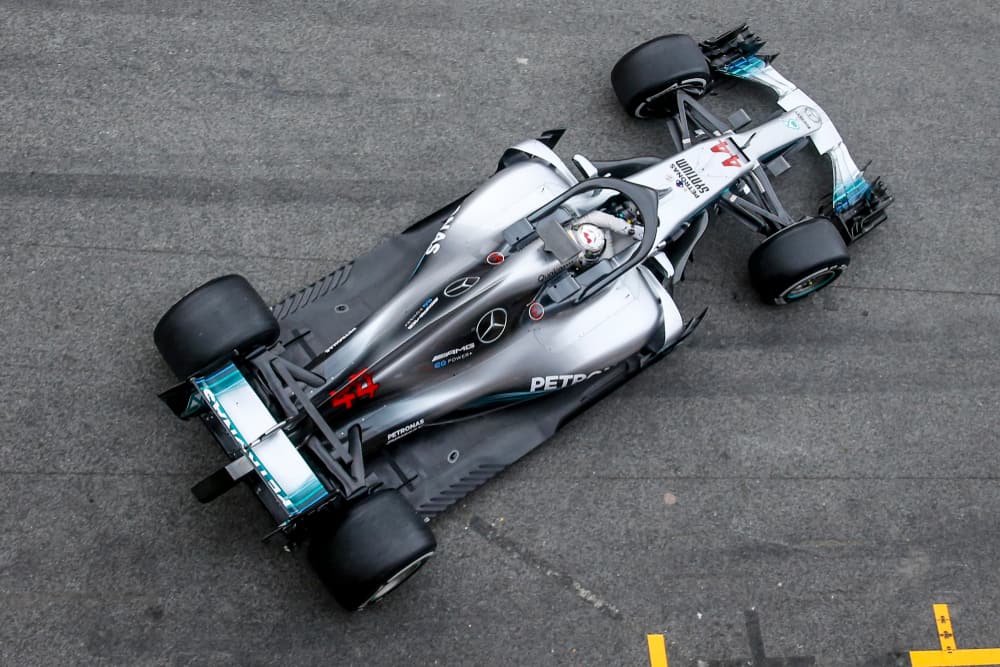
Famous Incidents Where Drivers Reversed
Formula 1 fans find it hard to remember instances where drivers used the reverse gear during a race. This is because it hardly gets used at all. However, there have been instances over the years where drivers have successfully or unsuccessfully used the reverse gear during a race. Let me refresh your memory a little…
- Ayrton Senna during a race in Catalunya 1989: Ayrton spun out during the race, staying in the middle of the track, and to avoid two upcoming cars reversed off the track. One of the best reversing moves I have seen in my life.
- Nigel Mansell during a race in Portugal 1991: Driving in his Ferrari, Nigel Mansell reversed into his pit bay during a pitstop. He was black-flagged for this action.
- Kimi Raikkonen had to reverse in Indianapolis 2004: When lining up for the start of the race, he overshot his grid line and had to reverse into position.
- Daniel Ricciardo during a race in Azerbaijan 2019: After overtaking Daniil Kvyat, he failed to make the following corner and drove into a side road. Ricciardo proceeded to reverse to get back on the track only to hit Kvyat, who could also not make the corner. This is a clear indication that you have no view of what is going on behind you when you reverse.
- Robert Kubica during lap 16 of the race in Monaco 2019: Kubica was clipped going into a corner and had no room to correct his track position without reversing. Two cars passed him before he could reverse, and he held up two cars until he reversed, and the race continued.
Related Questions
We have covered the question of Formula 1 cars can reverse. Here are some additional questions and information that could be helpful in understanding the world of Formula 1 a bit better.
Do Formula 1 Cars Use A Manual Or Automatic Transmission?
Formula 1 cars use a semi-automatic transmission. The drivers shift gears themselves with a paddle shifter located on the steering wheel. They do not control the clutch themselves, but to incorporate a certain skill level, they manually select the gears (8 forward gears and 1 reverse gear).
Why Don’t Cars Reverse Into Their Pits After A Race?
It’s just so much quicker for the pit crew to push it in because idling a car and overheating it further is also not recommended after a race.
Conclusion
Formula 1 cars can reverse, as it is fitted with a reverse gear that is small and light and usually weaker than the 8 forward-moving gears. Drivers rarely use it on track due to restrictions in place and the fact that it’s normally quicker and easier to spin your car out of a troublesome position.
It could potentially be a very dangerous action to perform, seeing no rearview mirrors fitted on a Formula 1 car. Basically, when a driver does reverse, it is done blindly and could lead to accidents on and off the track and cause harsh penalties for the driver.
Most Formula 1 drivers probably don’t even know how to use the reverse gear, as illustrated by Honda driver Takumo Sako during the Australian Grand Prix. His pit crew had to explain to him over the team radio how to use the reverse gear! Niki Lauda was once forced to use his reverse gear and was surprised that it worked at all.

